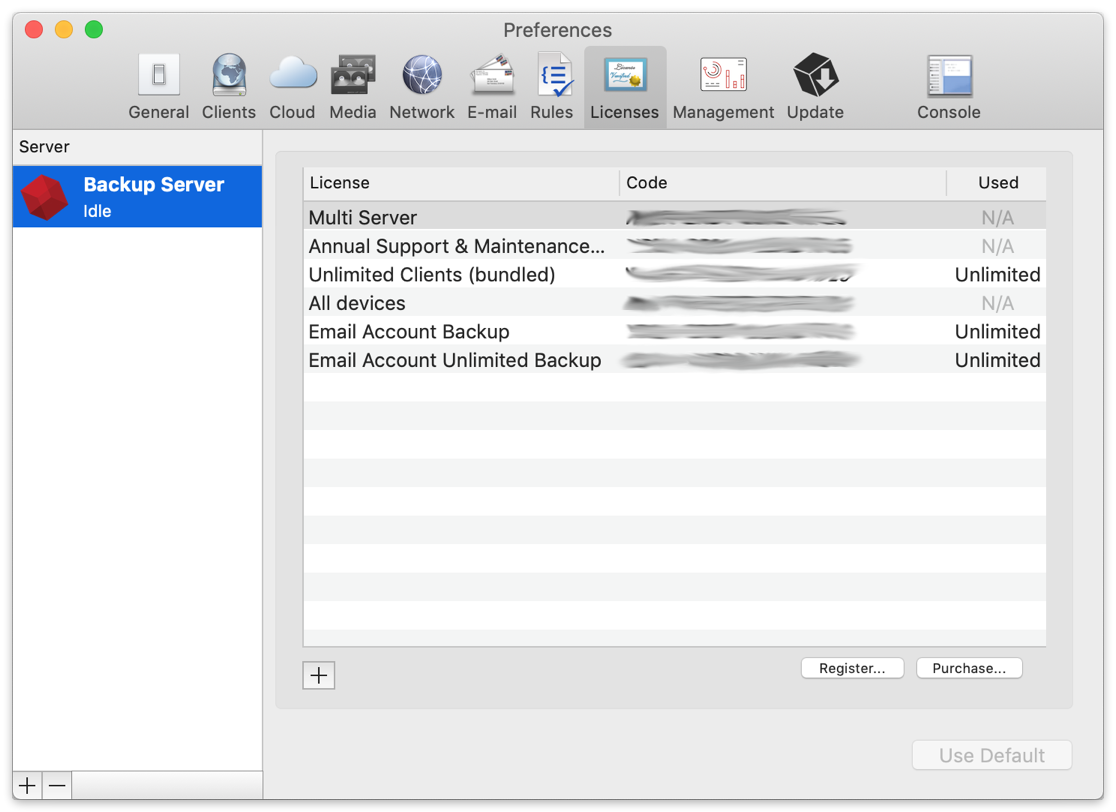The PNPDeviceID is how we whitelist removable devices in the Windows Environment. The steps below will show you how to find the PNPDeviceID:
- Removable Media Encryption For Mac Not Report To See Server Instance
- Removable Media Encryption For Mac Not Report To See Server Permissions
- Removable Media Encryption For Mac Not Report To See Server Ip
EMS device's PNPDeviceID from the Dell Encryption External Media (formerly Dell Data Protection | External Media Edition) log file

- The Endpoint Encryption agent for file and folder encryption on local drives and removable media. Use File Encryption to protect files and folders located on virtually any device that appears as a drive within the host operating system.
- Trend Micro™ Endpoint Encryption encrypts data on a wide range of devices, such as PCs and Macs, laptops and desktops, USB drives, and other removable media. Available as a separate agent, this solution combines enterprise-wide full disk, file/folder, and removable media encryption to prevent unauthorized access and use of private information.
- Once after authentication you would be able to see the contents inside the container and you can copy the data to you local machine volume for further use. Over here we are not encrypting the files in the removable media, we create a encrypted container in the removable media and then place files within that encrypted container.
To find the PNPDeviceID for removable storage from the Dell Encryption External Media Log file:
It is advised that at least 2 backups are made in two additional locations, such as on a removable media drive or on a network drive (not on the machine where EEE is installed). This way the backups remain easily accessible if it is required. Click the Browse button and select an appropriate save location and then click OK. You should now see a.
- Insert your removable storage device in to the Dell Data Protection encrypted computer.
- Open up the EMSService.log found at the locations: C:ProgramdataDellDell Data ProtectionEncryptionEMS.
- Look for the log entry shows the PNPDeviceID=
For example log entry: 14.03.18 18:50:06.834 [I] [Volume 'F:'] PnPDeviceID =
USBSTORDISK&VEN_SEAGATE&PROD_USB&REV_04092HC015KJ&0
- Section 1 / Green - Excludes the Vendor
- Section 2 / Blue - Excludes all of Seagate’s USB drives
- Section 3 / Purple - Excludes the specific model being used
- Section 4 / Orange - Excludes just this device
EMS device's PNPDeviceID in the Microsoft Windows Operating System
To find the PNPDeviceID for removable storage on Windows 7 or later
- Insert the removable storage device.
- Open the Control Panel and go to Administrative Tools > Computer Management.
- Go to Storage > Disk Management.
- Right Click on Removable Disk (F: in the image) and select properties.
- Select Details Tab and then select Device Instance Path in the Property drop-down menu.

The PNPDeviceID is displayed in the Value field.
Removable Media Encryption For Mac Not Report To See Server Instance
Once you have the PNPDeviceID, you can add it to the EME Whitelist group inside of the Removable storage policies on the Dell Encryption Personal (formerly Dell Data Protection | Personal Edition) Local Management Console or your Dell Data Protection | Enterprise Edition ServerDell Security Managment Server Remote Management Console.
In the Remote Management Console (RMC) navigate to Populations > Enterprise > Removable Media Encryption. Under Windows Media Encryption select Show Advanced Settings then scroll down to EMS Device Whitelist. Place the PNPID or up to the point you wish into the 'EMS Device Whitelist' field.
You can add the PNPDeviceID information to the EMS whitelist group inside of the Removable storage policies on your Dell Security Management Server (formerly Dell Data Protection | Enterprise Edition Server).
In the console navigate to Enterprise -> Security Policies -> Override (in the upper right for Dell Security Management Server, this is not present in Dell Security Management Server Virtual (formerly Dell Data Protection | Virtual Edition) -> change the Policy Category drop-down to Windows encryption -> Expand Removable Storage -> place the PNPID or up to the point you wish into the 'EMS Device Whitelist' field
I believe that that encryption/decryption software runs under Mac OS but it's in an 'enterprise' product line, e.g licensed and deployed across an enterprise, e.g. across a company with scores of PCs and Macs.
Removable Media Encryption For Mac Not Report To See Server Permissions
I think your best bet is to contact whoever sent you the disk with encrypted files that require custom enterprise software to access and ask them to instead send you a disk that you can read. PDF files can be very robustly encrypted with Adobe's software, and there are other inexpensive alternatives as well.
Removable Media Encryption For Mac Not Report To See Server Ip
Oct 30, 2020 9:04 PM
